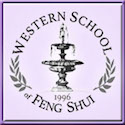Feng Shui Q & A: Placing Mirrors Above Stoves/Ovens
Placing Mirrors Above Stoves/Ovens
One of our Feng-Shui friends asks:
Q: 1) In the case where you have to place a mirror on the wall behind the kitchen stove (because your back is to the rest of the home), is it best to have a wood or metal frame around the mirror? Does the color of the frame matter? Can it be just gray or silver frame color?
2) How about a mirror above a fireplace? Does the color or material of the frame matter? How about items on the mantel above the fireplace? Is it best to place items in red tones to totally opposite of the fire colors?
A: Thanks for these questions!
Regarding mirrors above stoves:
While having a reflective surface does serve as a subconscious safety-net against being surprised when your back is to the room, there is an even bigger reason mirrors are used above stoves/ovens. Because your stove is a big ol’ fire element, we bring in mirrors (which represent the water element) to cut the fire and help bring balance to this energetic little zone! If it were me, I’d use a metal frame since the metal element nourishes the water element. Using a wooden frame in this place may send the psychological message of combustibility with all of that fire around. Here is a great chart that explains the Five Element nourishing/controlling/reductive cycles. Regarding the color of the mirror, you can leave it metallic, or if you want to make this a five-element display, choose a color not yet elementally represented, like an earth tone. Mostly- choose something you like!
I’d suggest similar solutions with color/material for above-the-fireplace mirrors. As far as items on the mantle or around the fireplace, make sure they aren’t combustible and don’t have the appearance of being combustable (find a different home for your vase of dried flowers, for example). A roaring fire is likely a very yang expression of the fire element, but remember, we want to see both yin and yang expressions of each element; so try incorporating touches of yin fire as well. Some yin-words/elements might be ornate, textured, floral, curved lines, rugs, dim light, etc. This Room Balance Analysis is a handy sheet that can help you balance the yin and yang in a room.
Thanks again for the opportunity for this exchange!

